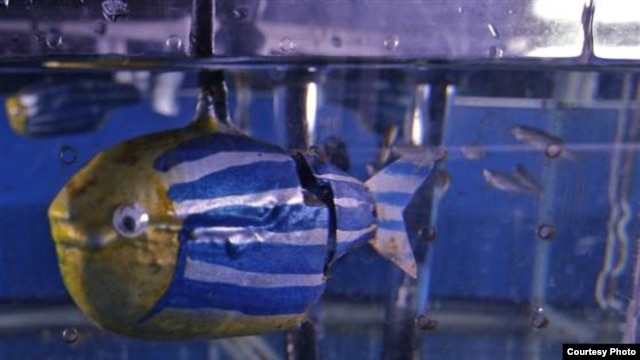
Mechanical engineer Maurizio Porfiri works with zebrafish, the so-called lab rats of the aquatic world. He and his colleagues at New York University’s Polytechnic Institute designed a remote controlled, motorized zebrafish robot.
Painted blue with bright yellow stripes, the robotic fish was shaped to resemble a female which was ready to mate.
It was then put into a 65-liter tank, separated from the school by a transparent piece of Plexiglas.
Real fish like look of 'robo-fish'
And, says, Porfiri, "It worked!"
The zebrafish were attracted to the shape and color of the robot as well as the movement of its tail.
Although the real fish preferred each other to the robot, they preferred spending time beside the robot to staying next to an empty space.
Both individual and groups of fish preferred the company of the robot.
Porfiri says even its large size didn’t seem to matter.
However, the researchers did notice the zebrafish tended to ignore the robot in the dark and were scared away by the noise of its motor.
Leading real fish away from danger
The findings bring scientists a step closer to deploying autonomous, self-directing robots to monitor and control fish behavior.
“So, for example, there can be an oil spill and you may want to have like a "sheep dog" that can guide your fish away to a safer area," Porfiri says. "Or you may simply have a hydro-powered plant where there are turbine blades that are spinning and they may be very dangerous to animals. So you may want to have a sentinel [fish] sitting there [to] guide your animals away from those dangerous situations.”
While submersible robots already help scientists with surveillance, exploration and data monitoring, Porfiri says a number of challenges remain before robotic fish can jump into an aquatic environment to manage fish behavior.
“What we need to understand from a scientific point of view is how to change the behavior and the performance of the robot so that it can exert different actions on different fish and behave differently in the presence of other stimuli. There are other animals living there. There are other obstacles.”


0 comments:
Post a Comment